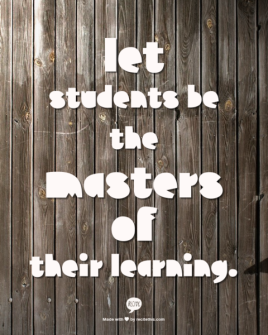
Knee to knee, on the same level, we sit beside each other, the truest definition of assessment.
“So how do you think you’re doing in here?”
The tone is noticeably encouraging but focused.
My goal during student conference time is to acknowledge areas of growth and identify areas of need, to be determined by the student wherever possible.
Too often we impose our focus on students and end up shutting them down.
By allowing them to choose the focus of the conference and the goals they want to set, we empower them to be in control of their own learning.
Choice is an extremely powerful tool that buys a teacher so much respect and cooperation from students.
Looking me in the eye, the student begins the conversation with areas they feel they are improving. I acknowledge agreement where appropriate and even make specific connections back to where I see it, so they know I am paying attention and that I read their answers to the forms they filled out.
Students want to know you noticed. They want to believe that you are invested and the best way to show your involvement is to be up to date on what is going on and if in times of fatigue you aren’t, just be honest, that will go much farther than trying to fake it.
From there, the moment of the conference takes a turn. The student turns inward and focuses on what they need help with. Not surprisingly anymore, they are spot on. Whether talking to them about an inability to conclude in their writing without just summarizing or the admission that they don’t know what to ask for help with or how to manage their time.
Each child has such different needs and is at such different levels, that there is no one right way to conduct a learning conversation. It all comes down to the relationship the teacher develops with the student. Trust goes a remarkable way and when a child knows that he or she can be honest and will receive honest feedback, the conversations are always unpredictably candid.
At the end of each conversation, (they take about 10-15 minutes), students walk away with 2 to 3 attainable goals that will be specifically addressed in the piece of writing I’m looking at right now. The feedback will be focused and the strategies will be offered and employed. Students will be expected to follow up with their own experiences in reflections and in their work.
They also leave with a smile. All children should feel good about their learning and that is our job. To make the experience one they want to replicate. This isn’t the time to verbally beat them with everything they aren’t doing. Believe it or not, they probably do it to themselves enough. This is the opportunity to show them what you see and help them bring it into focus so that their learning can improve.
Conference week is one of my favorites. I learn so much about my students and it’s where the real relationships develop. They feel my investment in their learning in what I’m able to offer them as their teacher; the most important things are my ear and my interest.
How do you engage students in conversation about their learning?